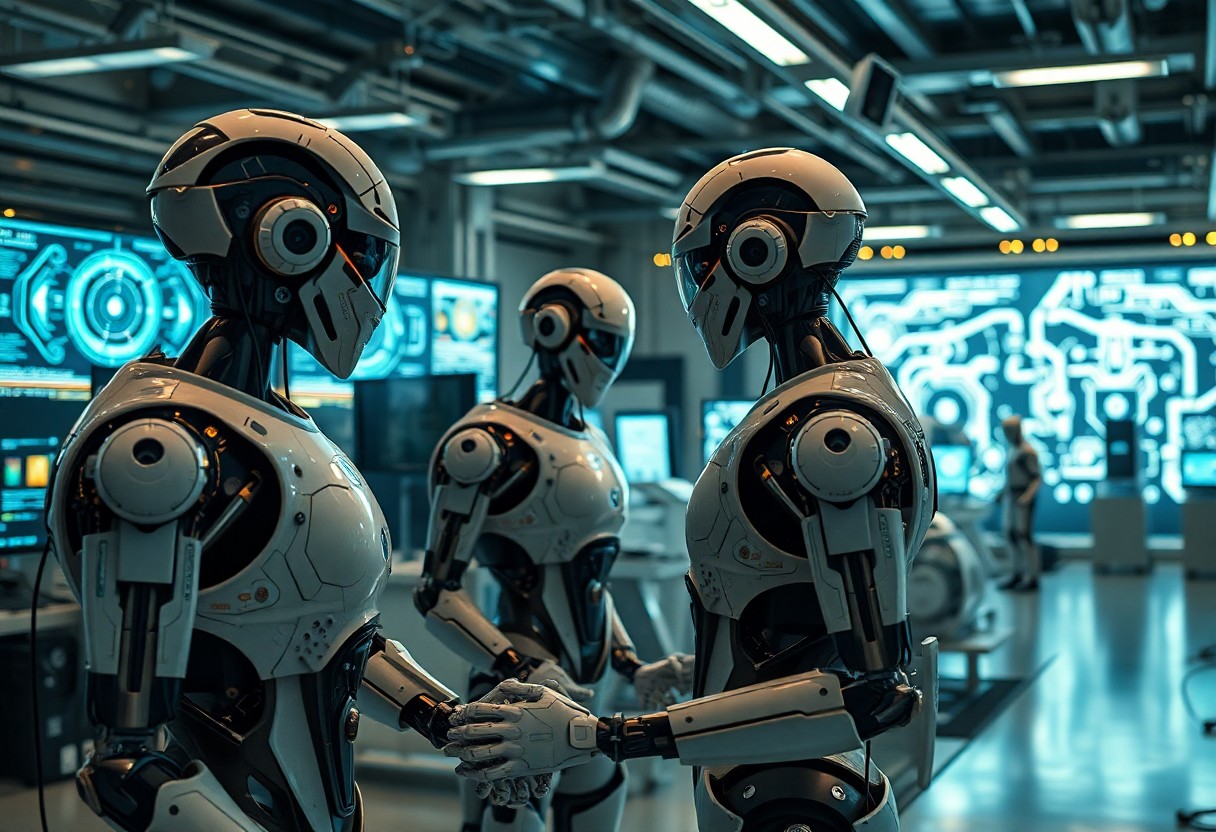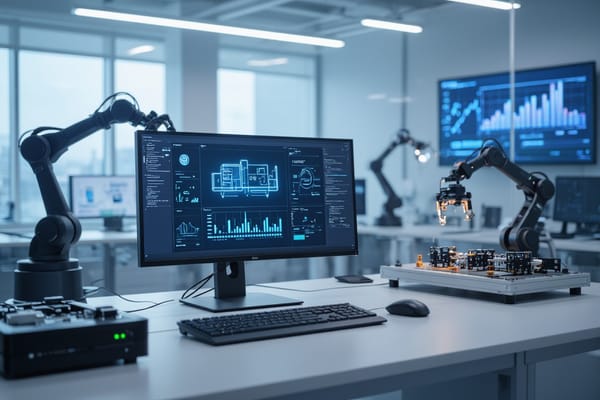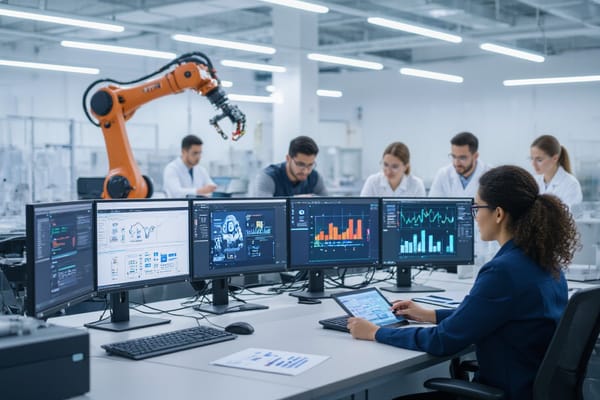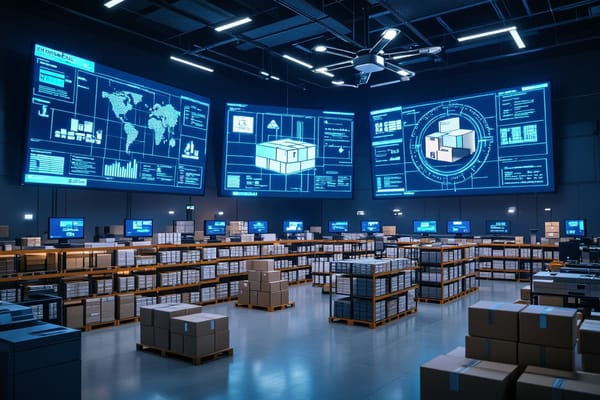AI and Automation: Exploring AI Automation

Exploration of AI automation can transform your business operations and daily workflows in ways you might not have imagined. As you navigate the rapidly evolving technological landscape, understanding how AI-driven automation works becomes necessary for staying competitive. You'll discover that combining artificial intelligence with automated processes not only streamlines your operations but also enhances decision-making capabilities, reduces human error, and creates opportunities for innovation. Whether you're a business owner or professional, embracing AI automation can lead to significant improvements in efficiency and productivity.

Key Takeaways:
- AI automation combines artificial intelligence with robotic process automation to handle complex tasks, leading to improved efficiency and reduced human error in business operations. Learn more at IBM's Intelligent Automation Guide
- The integration of machine learning algorithms enables AI automation systems to continuously adapt and improve their performance over time, making them increasingly valuable for data analysis and decision-making processes. Further details at McKinsey's Automation Insights
- While AI automation streamlines workflows and increases productivity, successful implementation requires careful planning, employee training, and ongoing monitoring to ensure optimal results. More information at Gartner's AI Resources
Understanding AI Automation
A seamless blend of artificial intelligence and automated processes, AI automation transforms your business operations by enabling machines to learn, adapt, and execute tasks with minimal human intervention. You'll find this technology streamlining workflows, enhancing decision-making, and boosting productivity across various industries.
Definition and Concepts
Across the spectrum of AI automation, you'll encounter systems that combine machine learning algorithms, natural language processing, and robotic process automation to handle complex tasks. Your business can leverage these technologies to automate repetitive processes, analyze data patterns, and make intelligent decisions based on predefined parameters (IBM Automation).
Historical Context and Evolution
Before AI automation became mainstream, businesses relied on simple rule-based systems and manual processes. Your understanding of automation has evolved from basic scripted tasks to sophisticated AI-driven solutions that can learn and improve over time (McKinsey Digital).
Historical developments in AI automation have shaped your current technological landscape. Starting from the first industrial robots in the 1960s to today's advanced neural networks, you can trace the progression through significant milestones: the introduction of expert systems, the rise of machine learning, and the integration of deep learning algorithms that power your modern automation solutions.
Technologies Driving AI Automation
Now you can witness the rapid evolution of AI automation through various cutting-edge technologies. From sophisticated algorithms to advanced robotics, these innovations are reshaping how you interact with automated systems in your daily life and work. The integration of these technologies creates a seamless ecosystem where machines and humans collaborate effectively.
Machine Learning and Deep Learning
With machine learning and deep learning, you can harness the power of algorithms that learn from data and improve over time. These technologies enable your systems to recognize patterns, make predictions, and adapt to new situations automatically. You'll find applications ranging from TensorFlow-powered image recognition to natural language processing in your everyday applications.
Robotics and Process Automation
Robotics and automation technologies transform your workplace by handling repetitive tasks with precision and efficiency. You can now automate complex workflows, from manufacturing processes to office administration, using intelligent robots and RPA platforms that streamline your operations.
A significant advantage you'll gain from implementing robotics and process automation is the ability to scale your operations while maintaining consistency. Your business can benefit from reduced errors, increased productivity, and improved resource allocation. These systems work 24/7, allowing you to focus on strategic tasks while automated processes handle routine operations.

Applications of AI Automation
Your business operations can be transformed through AI automation across multiple domains. From streamlining customer service with chatbots to optimizing supply chain management with predictive analytics, AI automation offers versatile solutions for modern businesses. These applications help you reduce operational costs while enhancing efficiency and accuracy in your daily processes.
Industry Use Cases
At present, AI automation drives innovation across diverse sectors. In manufacturing, you'll find smart robots performing precision tasks. Healthcare organizations use AI for patient diagnosis and treatment planning. Financial institutions implement automated fraud detection systems. E-commerce platforms leverage AI for personalized recommendations. Learn more about industry applications at IBM's Automation Guide.
Benefits and Challenges
Across your automation journey, you'll encounter both advantages and obstacles. Benefits include increased productivity, reduced human error, and 24/7 operational capability. However, you'll need to address challenges such as initial implementation costs, employee training requirements, and data security concerns.
A balanced approach to AI automation implementation helps you maximize benefits while minimizing risks. You'll need to assess your organization's readiness, invest in proper training, and develop clear policies for AI governance. Consider partnering with experienced providers and staying updated on best practices through resources like Automation.com to ensure successful deployment.

Impact on Workforce and Employment
Despite concerns about AI's impact on jobs, you'll find that automation is reshaping rather than eliminating employment opportunities. As you navigate this transformation, you'll notice that AI complements human capabilities, creating new roles while modifying existing ones. Your ability to adapt and collaborate with AI systems will determine your success in this evolving landscape.
Job Displacement and Creation
Around 85 million jobs may be displaced by 2025, but 97 million new roles will emerge, according to the World Economic Forum. You'll see traditional positions evolve into hybrid roles that combine human expertise with AI capabilities. Your career path might shift toward positions that focus on AI system management, data interpretation, and human-AI collaboration.
Skills of the Future
Impact of AI automation means your skillset needs continuous evolution. You'll need to develop expertise in digital literacy, data analysis, and AI interaction. Your emotional intelligence, creative thinking, and problem-solving abilities will become more valuable as AI handles routine tasks.
With the rapid advancement of AI technology, you'll find that upskilling becomes an ongoing journey. Your focus should include developing competencies in machine learning interpretation, AI ethics, and strategic decision-making. These skills, combined with your unique human perspectives, will help you thrive in an AI-augmented workplace. Consider exploring online learning platforms like Coursera to stay ahead of the curve.
Ethical Considerations
All AI automation implementations require careful attention to ethical principles. As you integrate AI systems into your workflows, you'll need to balance efficiency gains with moral responsibilities. Understanding the implications of AI decisions on human lives remains crucial for responsible deployment. Learn more about the ethical dimensions in Exploring the Power of AI: From Automation to Intelligence.
Privacy and Data Security
Behind every AI system lies vast amounts of data that require protection. Your organization must implement robust security measures to safeguard sensitive information. This includes encrypting data, controlling access permissions, and ensuring compliance with privacy regulations like GDPR. Regular security audits and updates help maintain the integrity of your AI automation systems while protecting user privacy.
Accountability and Bias
Data bias in AI systems can lead to unfair outcomes and discriminatory decisions. Your AI implementation needs clear accountability frameworks to identify and eliminate biases. Regular monitoring and assessment of AI decisions help ensure fair treatment across all user groups and maintain transparency in automated processes.
For instance, when you deploy AI in hiring processes, the system might favor certain demographic groups based on historical data patterns. You'll need to implement bias detection tools, diverse training datasets, and regular audits to ensure your AI systems make fair decisions. Establishing clear guidelines for human oversight and intervention helps maintain accountability in automated decision-making processes.
Future Trends in AI Automation
Unlike traditional automation systems, modern AI automation continues to evolve at an unprecedented pace. You'll witness the convergence of machine learning, natural language processing, and robotics reshaping how businesses operate. As What is AI Automation? All You Need to Know explains, these technologies are becoming more sophisticated and accessible, enabling you to streamline operations and enhance decision-making processes across various sectors.
Advancements in Technology
Around you, AI automation technologies are rapidly advancing with improved cognitive capabilities. You'll see the emergence of more sophisticated neural networks, enhanced computer vision systems, and smarter autonomous agents. These developments will enable your business to handle complex tasks with greater precision and efficiency, while reducing the need for human intervention in routine operations.
Predictions for Industry Transformation
An extensive transformation awaits across industries as AI automation reshapes traditional business models. You'll experience significant changes in manufacturing, healthcare, finance, and customer service sectors. These changes will help you achieve higher productivity levels while creating new opportunities for innovation and growth.
Trends indicate that your industry will witness the integration of AI automation with emerging technologies like 5G, edge computing, and blockchain. You can expect to see more personalized customer experiences, predictive maintenance systems, and automated decision-making processes becoming standard practice. This transformation will enable your organization to stay competitive in an increasingly digital marketplace.
Summing up
On the whole, your understanding of AI automation can significantly impact your business operations and daily workflows. As you navigate this technological evolution, you'll find that implementing AI-driven solutions can streamline your processes, reduce operational costs, and enhance productivity. While automation brings notable benefits, you should approach its integration strategically, considering both its advantages and limitations. To stay competitive, you'll need to continually adapt and upskill your workforce. For more insights, visit automation.com and ai.gov to explore the latest developments in AI automation.
FAQ
Q: What is AI automation and how does it differ from traditional automation?
A: AI automation combines artificial intelligence with automated processes to perform complex tasks that require decision-making abilities. Unlike traditional automation, which follows pre-programmed rules, AI automation learns from data, adapts to new situations, and can handle unpredictable scenarios. For example, while traditional automation might sort emails by sender, AI automation can understand email content and respond appropriately. Learn more at IBM's Intelligent Automation Guide.
Q: How can businesses implement AI automation effectively?
A: Businesses can implement AI automation by following these steps: 1) Identify repetitive tasks suitable for automation, 2) Select appropriate AI tools and platforms, 3) Train employees on new systems, 4) Start with small-scale implementations, and 5) Gradually expand based on success metrics. It's important to maintain human oversight and regularly evaluate system performance. For implementation strategies, visit McKinsey Digital Insights.
Q: What are the potential risks and challenges of AI automation?
A: Common challenges include data privacy concerns, initial implementation costs, potential job displacement, and system reliability issues. Organizations must also address ethical considerations, ensure proper security measures, and maintain compliance with regulations. Regular monitoring and updates help minimize these risks. Technical issues can arise during integration with existing systems, requiring careful planning and expertise.
Q: How does AI automation impact employee productivity and job roles?
A: AI automation typically enhances employee productivity by handling routine tasks, allowing workers to focus on strategic, creative, and interpersonal activities. While some jobs may be automated, new roles often emerge in AI management, oversight, and development. Employees can develop new skills in AI operation, data analysis, and process optimization, leading to career advancement opportunities.
Q: What are the future trends in AI automation?
A: Future trends include: 1) Enhanced natural language processing for better human-machine interaction, 2) Advanced predictive analytics for decision-making, 3) Increased use of machine learning in quality control, 4) Integration of IoT devices with AI systems, and 5) More sophisticated robotic process automation (RPA). These developments will continue to transform industries and create new opportunities. Explore current trends at Gartner's AI Insights.



